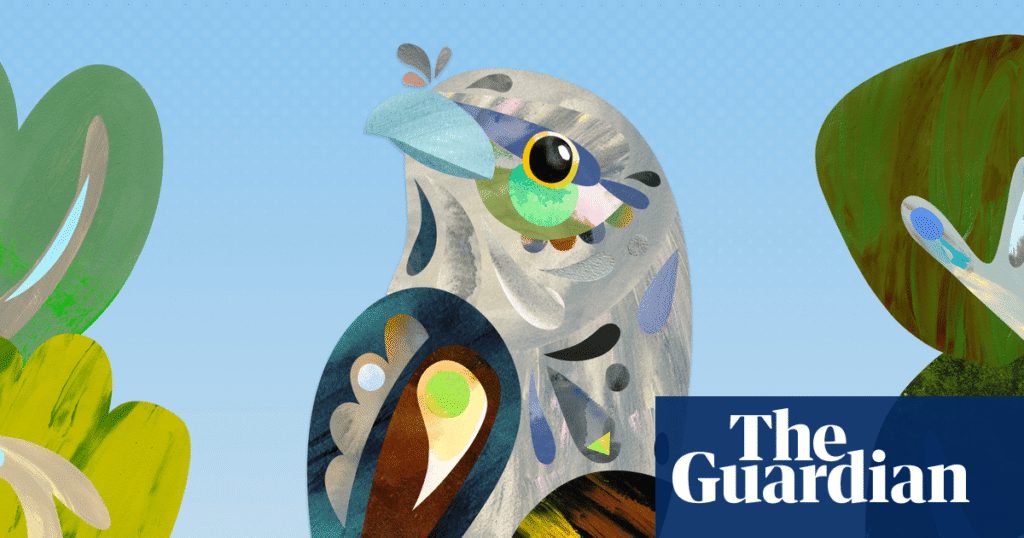The tawny frogmouth has been named Australia’s 2025 bird of the year, after taking second place in the biennial Guardian/BirdLife Australia poll three times running.
More than 310,000 votes were cast after polling opened on 6 October and the tawny led the charge from the start, despite being hotly and persistently pursued by two cockatoos: the Baudin’s black cockatoo and the ever-popular gang-gang.
A tawny frogmouth win, however, was far from guaranteed. It was voted runner-up in 2019, 2021 and 2023. It also led the vote in the final stages of the 2023 competition, only to watch the swift parrot soar past on the final day.
This year, 11,851 votes were cast for the tawny in the final round, comprehensively awarding it first place ahead of the Baudin’s black cockatoo, which came in second with 7,688 votes.
The gang-gang cockatoo, a red-crested Canberra favourite with a call that sounds like a rusty hinge, took third place – as it did in 2021 and 2023 – with 6,256 votes.
In fourth place was the willie wagtail with 4,947 votes. The bush stone-curlew came in fifth with 4,370 votes, pushing the laughing kookaburra to sixth place by a margin of just nine votes (4,361).
Tawny frogmouths are found only in Australia, but can be seen in almost any habitat apart from dense rainforests, alpine moors and treeless deserts. They are nocturnal, territorial and mate for life, nesting (haphazardly) on large horizontal branches of older trees.
Tawnies and other frogmouths, so-named for their flat gaping bills, are often mistaken for owls but are more closely related to nightjars. Their mottled silvery-grey and russet plumage resembles tree bark, making them challenging to spot, despite their prevalence across the country, including in cities.
Camouflage abilities notwithstanding, a German study in 2021 found tawny frogmouths to be the world’s most Instagrammable bird.
Sean Dooley from Birdlife Australia said the public response to this year’s poll had been “really joyful”.
“It’s a delight to be involved in something that feels celebratory and fun, and perhaps a little silly … it reminds people about how wonderful our bird life is, but how precarious so many of our species are,” Dooley said.
“Bringing attention to something like the rocket launch site being constructed on a really vital piece of habitat for the Eyre peninsula southern emu-wren, or talking about how the expansion of bauxite mining leases in the jarrah forests around Perth is just going be a brutal blow to the beautiful Baudin’s black cockatoo is really important.”
after newsletter promotion
The southern emu-wren came seventh, with 4,323 votes in the final round. Only four votes separated eighth and ninth place, with the spotted pardalote’s 3,474 votes just it edging ahead of the wedge-tailed eagle’s tally of 3,470. The little penguin was not far behind in tenth place, with 3,268 votes.
A first-time entrant, the Baudin’s black cockatoo is found only in south-western Western Australia, between Albany and Perth. Researchers have argued the species ought to be classified as critically endangered, as the population is steeply declining due to the continuing deforestation, but the WA government has so far not reclassified it.
“We know that Australia’s birds are facing an extinction crisis. The rarer things get, the more impact one-off events have,” Dooley said.
The announcement of the 2025 bird of the year coincides with Birdlife Australia’s national citizen science bird study, the Aussie Bird Count, which begins on Monday 20 October.
This is the first year that the winner of the inaugural poll in 2017, the magpie, failed to make the final 10. Previous winners also include the black-throated finch (2019), the superb fairy-wren (2021) and the swift parrot (2023).
2025 Australian bird of the year
-
Tawny frogmouth
-
Baudin’s black cockatoo
-
Gang-gang cockatoo
-
Willie wagtail
-
Bush stone-curlew
-
Laughing kookaburra
-
Southern emu-wren
-
Spotted pardalote
-
Wedge-tailed eagle
-
Little penguin

